During the Lunar New Year, many families buy marigolds to decorate their homes and altars. Marigolds are a popular, easily accessible, and affordable flower option. They also symbolize longevity, good fortune, and wealth, especially the large-flowered yellow variety, which is favored during the Tet holiday.
However, in recent years, wise women have been opting for a more traditional, vintage-inspired marigold, known as the royal peony marigold. This variety exudes elegance and beauty, creating a solemn and cozy atmosphere when displayed on altars. They are also very durable.

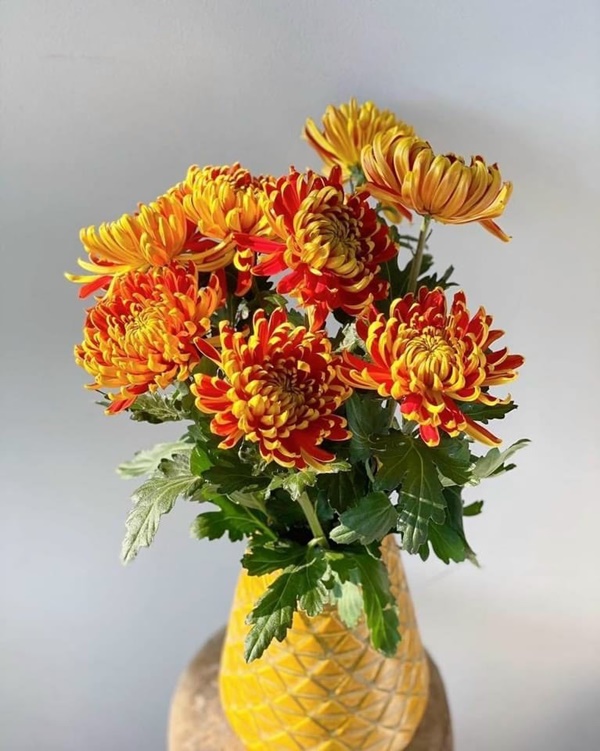
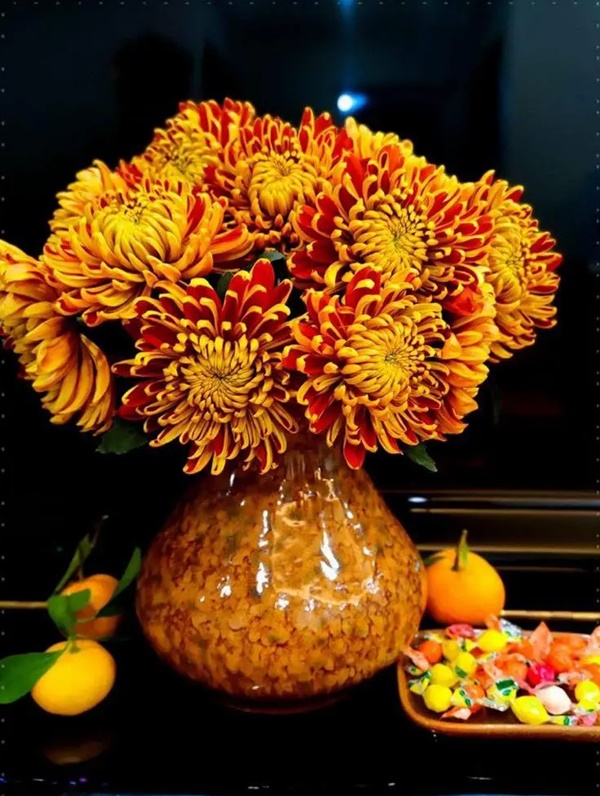
The royal peony marigold features large, curved petals that curve inward, with an outer golden hue and deep red inner petals, creating a sense of nostalgia and tranquility. Many people choose this flower for their altars during the Tet holiday as its colors are just right, creating a cozy and solemn atmosphere for worship.
The unique color combination of the royal peony marigold resembles an oil painting, attracting those who appreciate altar decorations during festive seasons. The peony marigold’s deep flower tones and thick, dark green leaves create a harmonious look. Therefore, when arranging these flowers, consider including the leaves.
Tips for Buying Royal Peony Marigolds
– Opt for fresh, sturdy flowers with intact stems that haven’t been soaked in flower preservatives for too long. Look for flowers carefully wrapped in netting. However, it’s important to inspect the flowers’ bloom before purchasing, as the netting is designed to maintain the flowers’ shape even after they’ve fully bloomed.

Choose flowers with large, even petals that curve inward.
– All varieties of marigolds have multiple layers of petals. When selecting royal peony marigolds, look for flowers with tightly packed petals that aren’t overly bloomed, misshapen, or damaged.
– Avoid flowers with visible stamens, as these are likely older blooms that won’t last long after purchase. Instead, choose flowers that still have some buds, as they will continue to bloom beautifully in the warmth of your home.
– Consider the length of the stems based on your arrangement needs. If the lower part of the stem still has leaves, the flowers are fresh. If the nodes on the stem are dark brown and dry, the flowers have likely been exposed to too much sun. Choose flowers with fresh, thick, dark green leaves that are free from pests and diseases. Opt for stems with buds and leaves for easier arranging.
Arranging Royal Peony Marigolds for Altars
Unlike arrangements for living rooms or other areas of the home, there are a few considerations when arranging royal peony marigolds for altars:
– Given the multicolored nature of royal peony marigolds, avoid using overly colorful or intricate vases. Instead, opt for a simple, classic vase or the altar’s original vase.
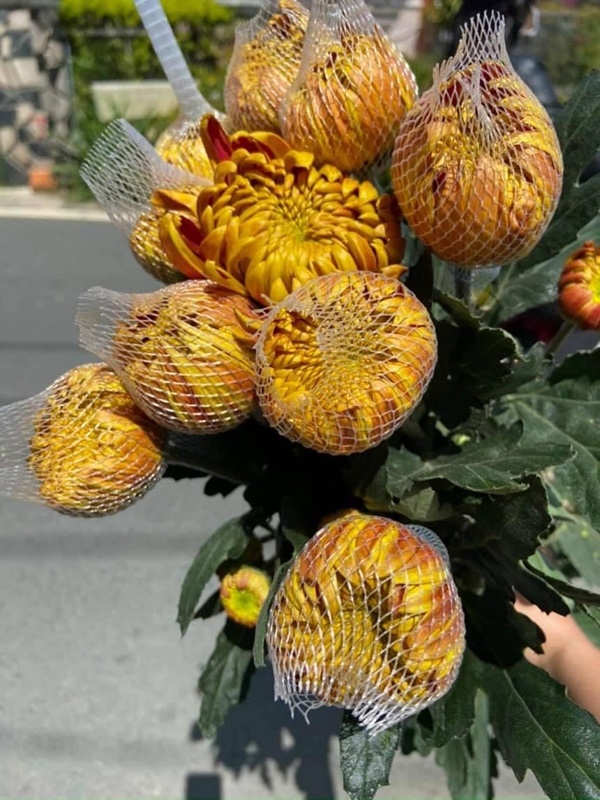
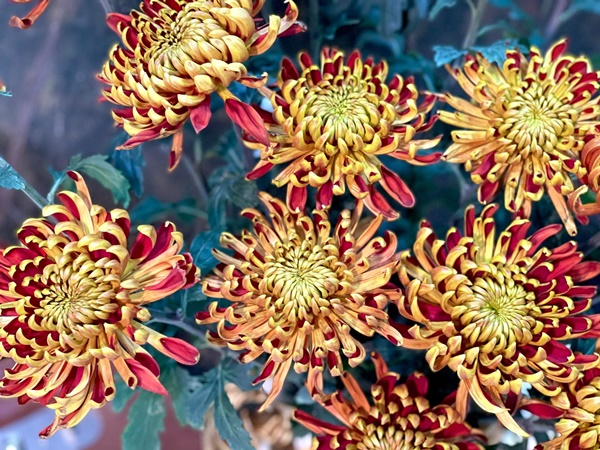
Choose flowers with a uniform size and avoid fully bloomed flowers.
– Avoid round, low vases or basket-style arrangements, as they can take up too much space on the altar. Even when following pyramid or staggered arrangement rules, try to minimize the flowers’ outward spread to maintain a neat and tidy look. For arrangements in other areas of the home, such as against walls or in corners, you can create a more spread-out display by staggering and layering the stems.
– When you buy the flowers, remove all the leaves from the stems and cut the stems at an angle. Place the flowers in water, ensuring it reaches a depth of 7 to 10 cm, to condition them. To extend the life of the royal peony marigolds, change the water and trim the stems every few days. This can keep the flowers fresh for up to half a month. Fortunately, marigolds don’t require much care when used in altar arrangements.
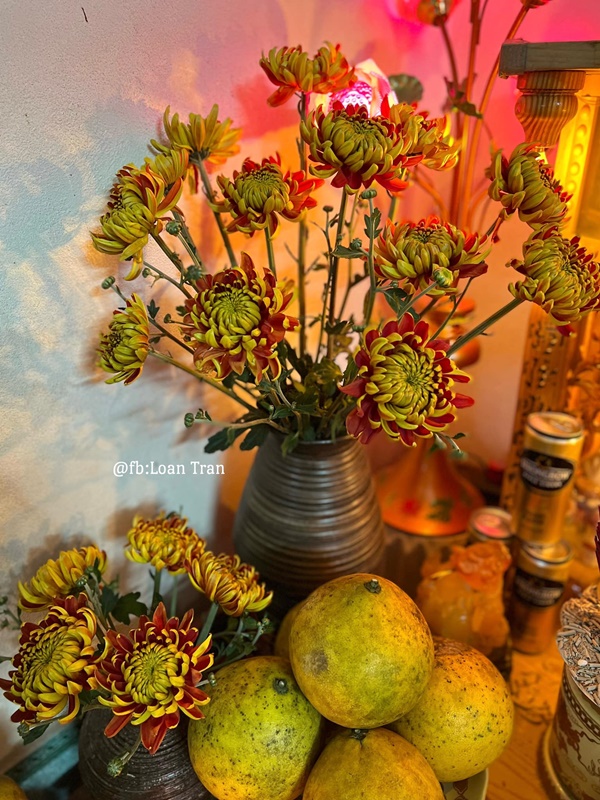
The length of the flowers’ stems may vary depending on whether they are intended for the ancestor altar or the wealth altar. Choosing the right vase is also crucial. Image: Loan Tran.
– Utilize the dark green leaves to balance the colors of the arrangement. If the flowers start to wilt, remove them from the altar immediately. Some people avoid using marigolds on altars because the stems can develop an unpleasant odor when soaked in water for an extended period. Therefore, regularly changing the water is essential when displaying marigolds on altars.
According to Phu Nu Moi



































